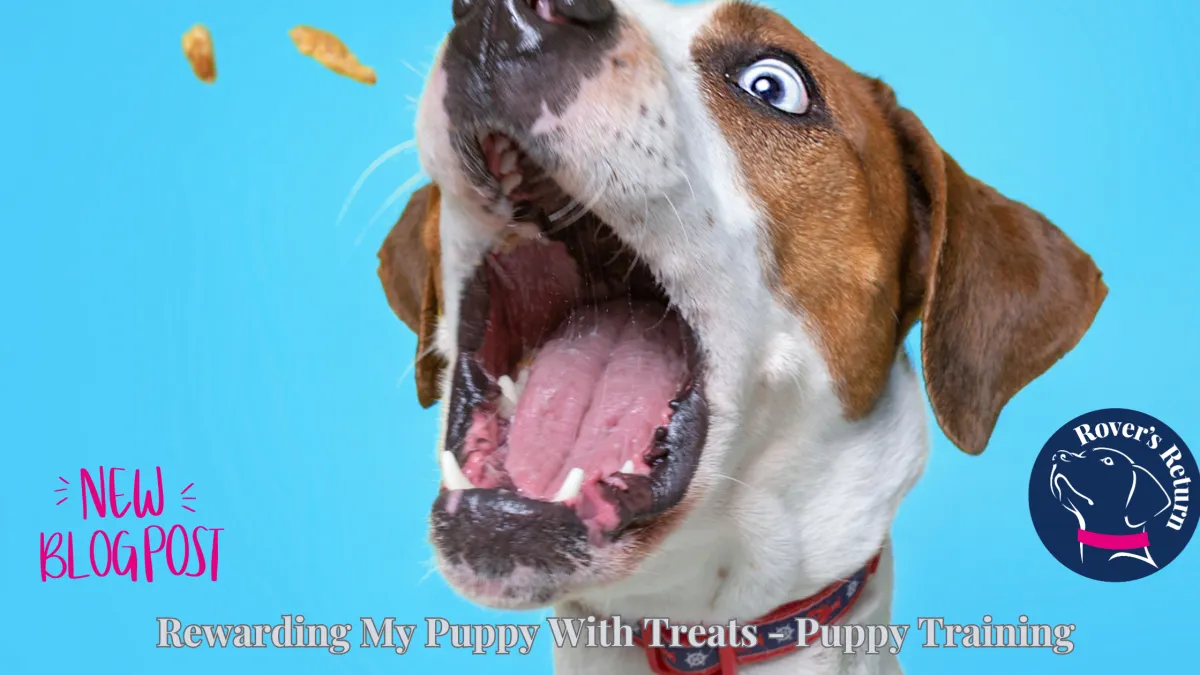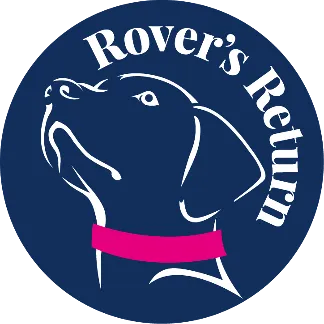Book a FREE 1:1 Assessment Call By Clicking HERE
Specialising In Dog Reactive Behviour
Accredited by APDT, ABTC and UK DOG Behaviour and Training Charter
Qualified and Experienced
Force Free Trainer and Behaviourist
Dog Training Leicestershire Educational Blogs

Discover how to effectively use treats to train your puppy with positive reinforcement. Learn about reward schedules and best practices for successful training."
Rewarding My Puppy With Treats - Puppy Training
Reward-based, positive reinforcement training is a fantastic way to build a strong bond with your dog and teach them new behaviours.
Treats play a crucial role in this process, acting as powerful motivators. However, it's important to understand when and how to reduce treat reliance to ensure you're building a sustainable and long-lasting relationship with your dog.
Should You Reward Dogs With Treats?
Yes! Food isn’t the only treat, toys, praise and fuss also work well to increase learning and motivate your dog to behave well.
Do Dogs Like You More if You Give Them Treats?
Not always! Think of training your dog to like doing an exercise and their brain will remember it and want to do it more if they value it. Treats can add value to training and increase the likelihood of that behaviour happening again.
Puppy Treats can cause issues! But there are solutions to make using treats for your puppy successful.
Your dog is becoming less responsive to treats: If your dog seems less excited about treats or is starting to ignore them, it could indicate that they're becoming less motivated by them. You may want to think about why this is and increase the value of the reward.
Your dog is getting distracted by treats: If your dog is more focused on the treat in your hand than on the task at hand, it can hinder their learning and create frustration. Use your marker word, have the treats in your pocket and only get them out once you have marked the behaviour.r
Your dog is becoming overweight: Over-reliance on treats can lead to weight gain in dogs. You can use their food, reduce the treats or use a different reward.
Your dog is starting to associate treats with specific words or actions: If your dog only performs a behaviour when a treat is present, they haven't truly learned the behaviour. I suggest if this is the case contact a trainer who can help you with this. It is fixable!
When Do You Stop Giving Puppy Treats?
You don’t want to stop rewarding behaviours as this can make the learned behaviours stop. But rewarding behaviours again and again will make the dog only do the behaviour for food.
When training your aim is to make the puppy understand that that behaviour is what you wanted them to do and enjoy doing it so they repeat it again and again, not for the food, but because the training was enjoyable.

Tips for Reducing Treat Reliance:
Gradually decrease treatment frequency: Start by rewarding every other correct behaviour, then every third, and so on.
Introduce other rewards: Gradually incorporate other rewards such as praise, playtime, or a favourite toy instead of food.
Use treats as a "lure" less often: Instead of using treats to entice your dog into a position, reduce the food lure, keeping your hand signal and adding your verbal cue.
Make treats unpredictable: Don't always reward your dog with a treat. Sometimes reward them with praise or a different reward. But don’t remove the food until they are doing the exercise time and time again.
Focus on building intrinsic motivation: Make training fun and engaging for your dog. When your dog enjoys the activity, they'll be more likely to participate without the constant lure of treats. You can then reduce the reward.
Important Note: Reducing treatment reliance should be a gradual process. Be patient and consistent with your dog, and always provide positive reinforcement for their efforts. If you are unsure reward your dog!
By gradually reducing treat reliance, you can help your dog learn to perform behaviours for the sake of the behaviour itself, strengthening your bond and creating a more fulfilling training experience for both of you.

How Do I Know When To Reduce Treats?
It can be difficult to know exactly when. When teaching an exercise you will likely shape it or lure it to get the dog to do the exercise and then phase out the lure before adding your cue. This requires practice.
A good rule of thumb is that when you have removed the lure and the dog can do the exercise on cue 90% of the time then you can begin to reduce food rewards.
Proofing your training involves practising in different environments. When adding distractions such as different areas, lots of noise, different sights etc you may need to increase the food value and continue with rewards.
I would advise that recall is one exercise where you can reward more than you want to reduce!
There is a science behind reinforcing your dog's behaviour and how to reward your dog.
If you are interested in learning more read on. But don’t get too bogged down with science!!
Reinforcement schedules are a key concept in dog training, determining how often a behaviour is rewarded. Here are the main types:
Continuous Reinforcement: Rewarding every instance of a desired behaviour. This is great for teaching new behaviours but can lead to extinction if rewards stop.
Intermittent Reinforcement: Rewarding behaviours occasionally. This makes behaviours more resistant to extinction and is ideal for maintaining learned behaviours.
Types of Intermittent Reinforcement:
Fixed Ratio: Rewarding after a specific number of behaviours (e.g., every 5th sit).
Variable Ratio: Rewarding after an unpredictable number of behaviours (e.g., sometimes after 3 sits, sometimes after 7). This is highly effective for maintaining behaviour.
Fixed Interval: Rewarding the first behaviour after a specific time has passed (e.g., the first sit after 30 seconds).
Variable Interval: Rewarding the first behaviour after an unpredictable amount of time (e.g., sometimes after 20 seconds, sometimes after 45 seconds).
Choosing the Right Schedule:
Teaching behaviours: Use continuous reinforcement initially for clarity.
Maintaining learned behaviours: Gradually transition to intermittent schedules, especially variable ones, to make behaviours more durable.
By understanding reinforcement schedules, you can effectively train your dog and build a strong, lasting bond.
Highly Qualified Behaviourist
Accredited by APDT, ABTC and UK DOG Behaviour and Training Charter
Accredited Scentwork Instructor
Force Free Trainer and Behaviour
Force Free Trainer and Behaviour
Accredited Scentwork Instructor
Accredited by APDT, ABTC and UK DOG Behaviour and Training Charter
Highly Qualified Behaviourist
Contact Us
Sam: 07725 802995
You can contact us via Live Chat button at the bottom of the screen or the contact box to the right.
You can also book one of our services online using the View Dates buttons under the service you require.
© 2023 by Rovers Return Dog Trainers Academy - Force Free Dog Training Lutterworth, Broughton Astley, Leicestershire, Hinckley, Nuneaton, Stoney Stanton, South Kilworth, Ullesthorpe
Privacy Policy | Terms and Conditions | Terms and Conditions of Services | Sitemap

Facebook
Instagram
X
LinkedIn
Youtube
TikTok